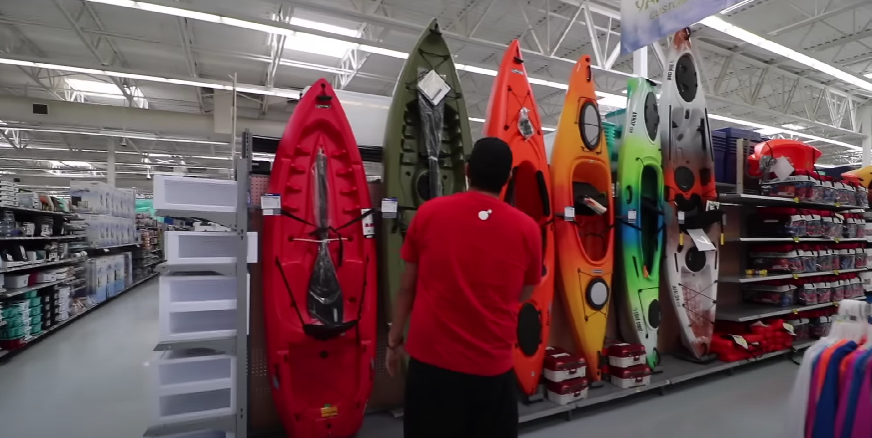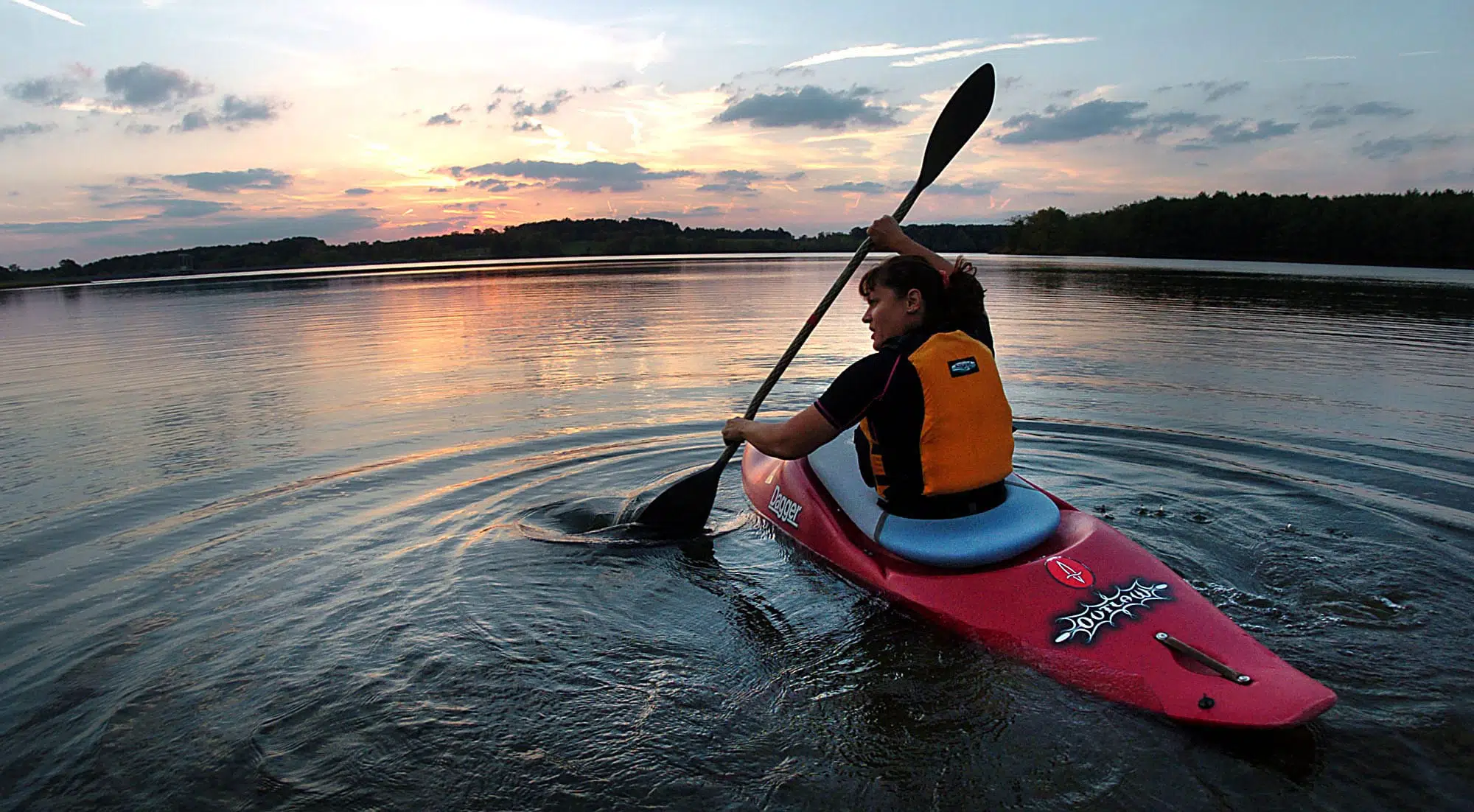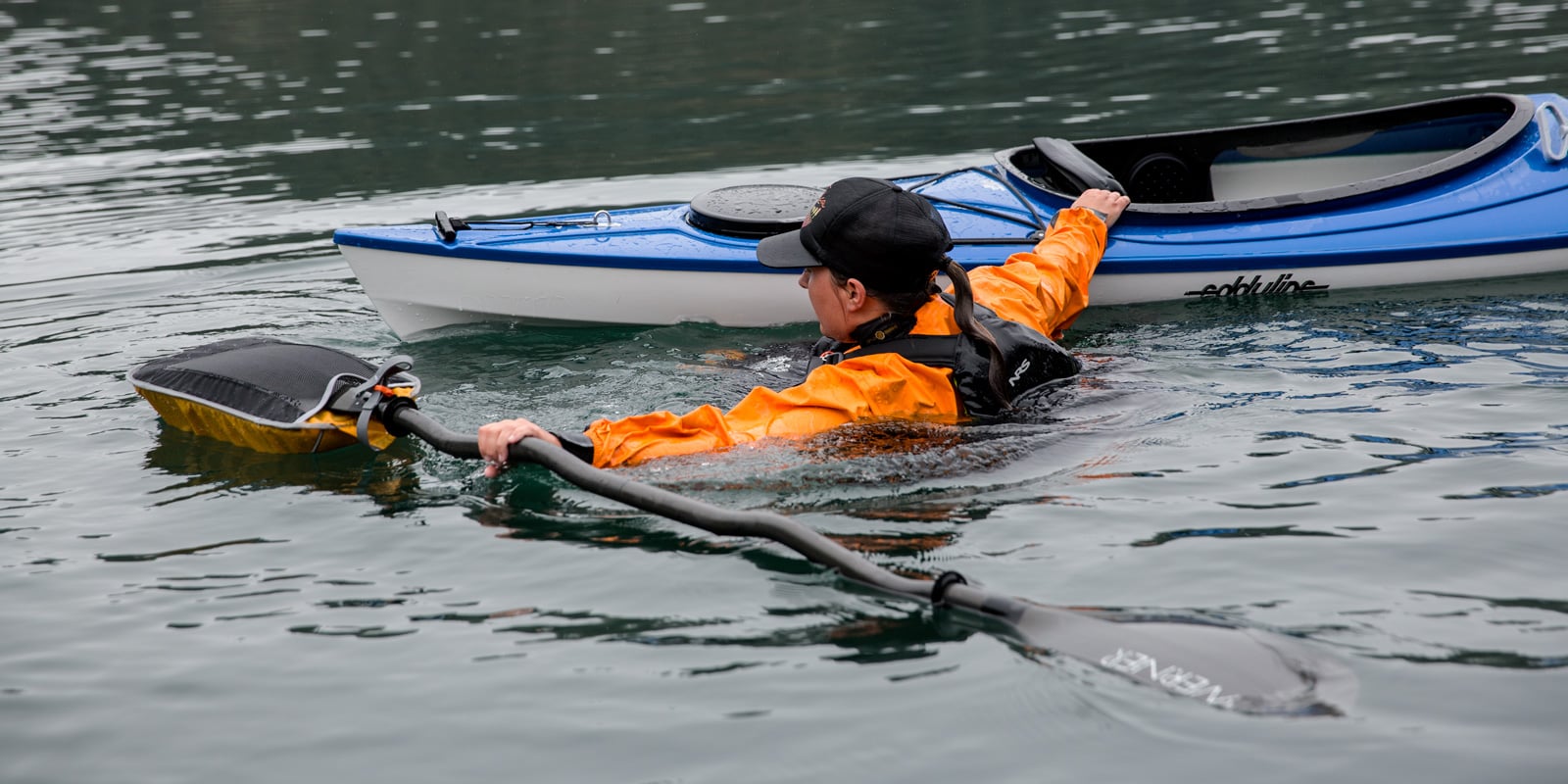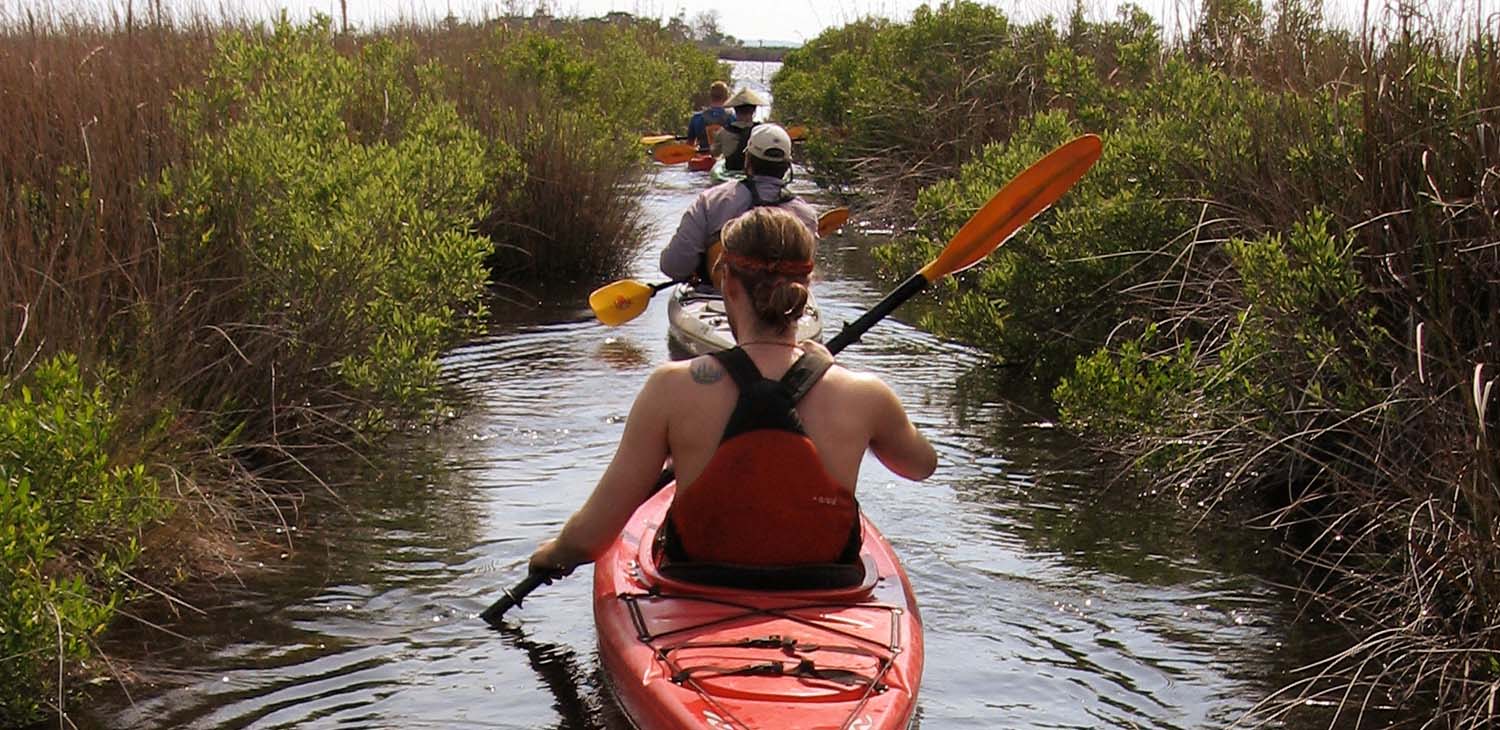
- Alabama
- Alaska
- Arizona
- Arkansas
- California
- Colorado
- Connecticut
- Delaware
- Florida
- Georgia
- Hawaii
- Idaho
- Illinois
- Indiana
- Iowa
- Kansas
- Kentucky
- Louisiana
- Maine
- Maryland
- Massachusetts
- Michigan
- Minnesota
- Mississippi
- Missouri
- Montana
- Nebraska
- Nevada
- New Hampshire
- New Jersey
- New Mexico
- New York
- North Carolina
- North Dakota
- Ohio
- Oklahoma
- Oregon
- Pennsylvania
- Rhode Island
- South Carolina
- South Dakota
- Tennessee
- Texas
- Utah
- Vermont
- Virginia
- Washington
- West Virginia
- Wisconsin
- Wyoming
How Much Is A Kayak? - Kayak Prices Revealed!
How Much Is A Kayak? - Kayak Prices Revealed!
As the popularity of kayaks increases worldwide, so does the watercraft supply. Today, various kayaks are available, all with different prices and quality levels. But how much do kayaks cost, and what fee should you pay for a good kayak?
From $130 to $800, kayaks can range in price depending on the type of kayak, use of the kayak, build quality, accessories, brand, and materials of the ship. Top-quality kayaks can cost up to $1000.
It's a personal decision to buy a kayak, and no one can determine what kayak you should buy yourself. Choosing the right kayak for you depends on personal preference and requirements. Price is vital in deciding which kayak you should buy, but it also affects which kayak you should not consider. Discover which kayak is the best value for the money by examining its price range.
What Should I Look For In A Kayak?
The kayak's speed and tracking will be improved by increasing its length and width. If a kayak is broader and shorter, it will be more stable and simpler to turn, but its speed will likely suffer. If you are new to kayaking, a wider kayak may be a good choice as you get used to being on the water because it will provide you with more room to move around.
After Googling the phrase "buying my first kayak," you could get the impression that purchasing a kayak is more complicated than it is, which might put a damper on the enthusiasm you have about making your first kayak purchase. Don't worry about it; I've condensed some information into the essentials you must understand before getting started.
Let's not waste any more time:
- What budget? You can obtain a kayak for $299, but just like everything else in the enchanted world of materialism, the quality of the kayak will reflect the price you spend for it. Establish a spending limit, but be sure to leave some wiggle room in it, as you will also need to account for additional costs, such as sales tax if you make your purchase locally, shipping costs if you make your purchase online, a paddle, a personal flotation device (PFD), a dry bag, safety equipment, fishing accessories, and something that many people forget transportation gear. Suppose you don't already own a vehicle that can accommodate your kayaks, such as a car, SUV, a truck with at least some cross bars, or a trailer. In that case, you'll have to factor in the additional cost, which may sometimes be equal to or even greater than the price of your kayak. Be practical: assuming you already have all the necessary transportation gear, you can anticipate spending between $800 and $1200 for a brand-new, high-quality kayak and all the equipment you will need. This is the price range you should plan on.What kind is it? You may be familiar with the terms sit-on-top and sit-inside kayaks. To explain the difference between the two, in a nutshell, a sit-on-top kayak is a floating deck that you sit on top of, whereas a sit-inside kayak is more similar to a shoe in that you insert your legs down to your waist into the cavity of the kayak. I could write an entire article on the benefits of choosing one over the other, but for the sake of concise reading, I would suggest sit-on-top kayaks if your goal is to fish or if you want to have a great day on the water. As long as you don't mind a little spray of water here and there, they are simpler to get into and out of, self-draining, giving additional accessorizing possibilities and making it easier to get to your stuff. Although sit-inside kayaks are not as popular as sit-on-top kayaks, they do have some advantages over their more famous counterparts. These advantages include better protection from the elements (especially when paddling in colder waters), typically improved performance, and a tendency to be lighter in weight than their sit-on-top counterparts. However, sit-insides do not have drains and may give people who are claustrophobic the feeling of being "locked in" (raising my hand).Which size is it? To get measured, you will need to consider several factors, such as where you typically plan to paddle (lakes, rivers, open bays), for how long, what you will be doing (exploring, fishing, etc.), weight requirements, transportation and storage options, and how much space you have available. I am going to divide this into three parts:Length: In conclusion, shorter kayaks (nine to ten feet) are more suitable for children, adolescents, and lighter adults. They are also simpler to transport and store and provide the best maneuverability for smaller bodies of water and streams. However, shorter kayaks may not track as well as longer ones. To clarify, tracking refers to the capacity of a kayak to maintain a linear motion as it is being paddled. There is a possibility that shorter kayaks have reduced power and less storage space. The ideal option for the average adult paddler is a mid-range kayak, which is 11 to 12 feet long and offers a nice blend of agility, tracking, capacity, and storage. These kayaks are also best suited for most bodies of water. Kayaks over 12 feet are ideal for long-distance paddling on larger open waters because they provide the best tracking, efficient straight-line paddling, and more capacity and storage space. However, because of their length, longer kayaks will be more challenging to maneuver on the water, transport, and store, and they may also be heavier.Width: Although this characteristic can change depending on the form of the hull of a kayak, in general, the narrower the kayak, the faster it will be since it will have an easier time "slicing" through the water; nevertheless, this will result in the kayak having less stability. Kayaks with a width of 32 inches or more will offer the most significant degree of stability, although they may move slowly depending on the hull design. Some kayaks are built with pontoon-style hulls, which offer improved stability but can be more challenging to handle than other hulls. If you need additional capacity and desire to stand frequently to paddle or cast your fishing line, push it to 32"-34". If you want to stand frequently to paddle or cast your fishing line, push it to 32"-34". I recommend sticking to the range of 30-32" for general recreational and fishing purposes.Remember that the claimed capacity takes into account both you and your belongings, placid waters, and pleasant weather. If the maximum weight that a kayak can hold is 350 pounds and you weigh 250 pounds, you won't have many places for supplies, and you won't have much wiggle room in case of any unexpected situations. When added to your gear and all of your technological gadgets, the cost of a cooler stocked with food, beverages, ice, and other electrical equipment may rapidly mount up. I recommend that you take your weight, add 10 pounds for clothes, hats, glasses, and shoes and another 50 pounds for all of your gear, especially if you are fishing, and allow an absolute minimum of 50 pounds of wiggle room. This will give you a total weight of 150 pounds. Consider the following scenario for a person who weighs 200 pounds: When you subtract your weight of 200 pounds plus 60 pounds from the capacity of 350 pounds, you have around 90 pounds of wiggle room.Which substance is it? Plastic is the material for constructing most kayaks since it is inexpensive, long-lasting, and very straightforward to mend, provided the appropriate skills are possessed. Some kayaks are built out of composite materials like fiberglass, which has several benefits but is typically more expensive, has the potential to get damaged more efficiently, and can be a little bit more challenging to repair. Stay away from anything other than plastic if general recreation and fishing are your things.Which seat is it? In days, most kayaks came equipped with a padded seat made of dense black foam placed in the cockpit area. These days, you'll find that more kayaks are coming standard with suspended seats in the form of adjustable lawn chairs with high back support. These seats are not only more comfortable, but they also keep you dry, which is a significant plus. Even if this is your first time on the water in a kayak, you'll discover that having a seat like this is helpful.What paddle? This question is frequently asked, and its answer can become somewhat specific depending on factors such as height, arm length, kayak width, and sitting position. We always recommend that you visit your local dealer to get properly measured, but if you are ordering online, a good rule of thumb is that if you are between 5' and 6' tall and your kayak is about 32" wide, you can't go wrong with a 240" cm length paddle. If your kayak is wider than 32", we recommend going with a shorter-length paddle. If you paddle a kayak with a width of fewer than 32 inches and your height is less than 6 feet, a paddle measuring 230 centimeters will work fine for you. Regardless, there are a lot of tools available on the internet that will assist you in finding the appropriate paddle length based on the particulars of your situation. Paddles made of carbon fiber can cost as much as your kayak and come with various blade shapes and lengths that can be adjusted. This can be overwhelming regarding the design and the materials used to make the paddles. For the sake of this piece, which is geared toward novice paddlers, we strongly suggest that you invest in a recreational paddle with a fiberglass shaft and a nylon plastic blade as its basic configuration.What about going fishing instead? What does it take to turn a kayak into a fishing kayak? You only need your fishing gear, a rod holder, and the desire to go fishing to get started. A rod holder can be attached to or built into a kayak to keep your fishing rod in and out of the way. In today's market, many kayaks already come equipped with a couple of flush-mounted rod holders; however, there are a few other accessories that you should also consider purchasing. These accessories include a cooler to keep your fish fresh (if you plan to keep them), a set of fish grips, an anchor to keep your kayak positioned in windy conditions, and a storage crate or bag for your tackle. Hundreds of kayak fishing accessories are available. For the first time, keep it easy, keep it basic with a few essential items, and gradually modify your rig according to your needs and fishing style. There are hundreds of kayak fishing accessories available.What about the issue of safety? This should have been the first item on the list. It is up to you to maintain kayaking as one of the safest sports, even if it is already one of the safest. It is required by law in most states that you carry a personal flotation device (PFD) and a whistle at all times, but these items are only helpful if you wear them. If you intend to paddle at dawn, dusk, or night, bring a deck-mounted visibility flag and a 360-degree light with you. You should also include an emergency dry bag with extra clothing, a first aid kit, and an emergency beacon device or mobile phone. You should also keep a knife that is immediately accessible and protected by a sheath either attached to your flotation device (PFD) or carried in a pocket at all times. And last but not least, it does not matter what time of year it is; you should always pack a lot of water, a lot of snacks, and sunscreen with you wherever you go.What about the space for storage? The majority of kayaks provide storage both on the interior and exterior. Internal storage, which you can usually get to through a rubber or locking hatch, is a good place for things you don't need to get to often, like the emergency kit we discussed earlier. Your fishing gear, more relaxed clothes, and other things you might need to get to quickly and often should go in the outside storage, which is usually on the bow or stern of the boat and has some bungee cords. If you intend to go fishing, it is highly recommended that you use dry bags to protect your belongings from getting wet and a crate bag to help you stay organized with your fishing gear.Where does concern fit in? Kayaks are highly robust craft that, with the right level of maintenance, may survive for decades. Keep them in shaded regions, and if possible, keep them inside with the hull facing up or on its side. Make sure that you thoroughly clean after each usage and that the hull's interior is arid before you put it away. Once everything is dry, ensure all openings are sealed up; you don't want any animals to take up residence inside your kayak!The choices available are limitless, and this is true for any sport. You can buy kayaks with pedals and engines, kayaks specialized for specific sports like kayaking on the sea or rapids, and even kayaks with innovative technological systems. There will also be mentions of rudders throughout the text. A rudder is an attachment for kayaks that are not required but can be added for additional control throughout your kayak.
What Is the Cost of Kayaks?
What Is the Cost of Kayaks?
Today, kayaks are available from hundreds of manufacturers and companies, with even more retailers selling them. It can be challenging to determine the price of kayaks when there are so many options to choose from.
From $130 to $8000, kayaks can run the gamut depending on what the vessel is made of, what it is intended to do, and what extras are added. Kayak prices are affected by the materials used to make them and the brand.
A typical beginner kayak isn't very expensive. Kayaks of this type are also not of the best quality, are made from cheap plastics, and come with very few features. Those who use these kayaks on short, small dam excursions are not serious paddlers.
It depends on what the kayak is used for, but beginner kayaks typically cost around $140. Professional paddlers and athletes use advanced kayaks, which are much more expensive and provide the best performance.
Two factors determine the price of a kayak: the quality and the type of kayak. Modern kayaks can be divided into seven categories: fishing kayaks, whitewater kayaks, sea kayaks, recreational kayaks, touring kayaks, inflatable kayaks s, and tandem kayaks.
Most fishing kayaks are expensive, but recreational kayaks and kayaks made for kids can be very affordable. Let's look at these kayaks, learn what they are used for, and how much they usually cost.
Recreation Kayak
Recreation Kayaks
The most common type of kayak is the recreational kayak. Kayaks such as these are not designed for professionals or serious paddlers but are multipurpose kayaks anyone can use to enjoy a day on the water.
In addition to sit-in and sit-on kayaks, these kayaks are equipped with various accessories and features for recreational kayaking.
Kayaks for recreational use often cost between $300 and $1000, depending on their quality.
Fishing Kayaks
Fishing Kayaks
The most expensive type of kayak is a fishing kayak. Due to their specialized nature, these kayaks must be able to offer the most significant level of versatility and utility.
The kayak should be stable, sturdy, and able to handle rivers, lakes, dams, and even the ocean while carrying the fisherman, fishing tackle and equipment, and any fish caught while in the kayak.
Many features go into these kayaks, which makes them so expensive.
For an entry-level kayak, prices can range from $500 to $8000, depending on the features and equipment.
Canoes & Kayaks for Whitewater (White Water kayak Cost)
Canoes & Kayaks for Whitewater
The most expensive kayaks are not whitewater kayaks, as many believe. Whitewater kayaks must be sturdy, well-built, and challenging to handle rough water well. However, they are not always the most well-equipped kayaks, and many of them are built within a price range that would not be too harmful if they were severely damaged.
The whitewater kayak is specifically designed to handle whitewater river rapids. They are fast and very lightweight, and they are streamlined and burdensome. Kayaks like these are the perfect choice for those looking for an adrenaline rush.
Kayaks of this type typically cost $700 to 1400, depending on how well they are constructed and what they are made of.
Touring Kayak Prices
Kayaks designed for severe and experienced paddlers are touring kayaks. They are larger, built more arduous, and designed to ride higher than recreational kayaks to cope better with rough water and strong winds.
These kayaks are some of the most well-equipped and are also more expensive than most others. A touring kayak can cost anywhere from $1000 to $2100.
Sea Kayak
They are named for their intended purpose: paddling on the open ocean. These kayaks are stable yet maneuverable, can handle rough water, and are lightweight. The kayaks can withstand smooth waters and fierce winds and waves, and they are specialized in what they do.
Kayaks for the sea are very well-equipped and come in various sizes, shapes, and types. Prices for these kayaks typically range from $1000 to $2000, but they can be customized with accessories and equipment to fit the owner's needs.
Inflatable Kayak
Inflatable Kayaks
There is some controversy in the addling world over inflatable kayaks. Inflatable kayaks are incredibly cheap, very low-quality kayaks that cost almost nothing, and some highly high-end inflatable kayaks that can even be used for whitewater kayaking.
Let us leave out, for now, the very inexpensive inflatable kayaks since they are not considered real kayaks. Most people do not realize how well-equipped the high-end inflatable kayaks are and they are very durable. However, they tend to be heavier and more easily damaged than solid kayaks and store more quickly than others.
An excellent inflatable kayak usually costs $500 to $800
Related Why are inflatable kayaks so expensive?
Tandem Kayak
Kayaks designed for two people to use simultaneously are called tandem kayaks. Therefore, the kayak must be more significant, heavier, stable, and well-built.
Due to these factors, tandem kayaks have a higher cost, but those who use them swear they are worth it. Basic tandem kayaks cost $500, while more advanced models can cost $2500.
Conclusion
Various kayaks are available to suit every paddler's preferences and needs, and kayaks are becoming increasingly popular. You can get started with a decent-quality kayak for around $200.
Kayaks with higher price tags will generally be of higher quality, but regular kayaks with regular price tags can also be of high quality. Don't try to buy the most expensive kayak you can find; instead, choose a kayak that suits your budget.
Frequently Asked Questions
What is the cost of a good sea kayak?
Tandem kayaks often have two of everything: seats and storage areas. For tandem sea kayaks, prices range from around $500 to over $4,000, and the average recreational tandem kayak costs around $1,100.
Is it a good idea to buy cheap kayaks?
Rough waters are not suitable for cheap kayaks. Water might fill up in the kayak, or the boat might be too low, allowing water to enter. Their performance in rough waters is not satisfactory. Kayaks with cheap designs are hard to steer straight.
What should I spend on a kayak?
Recreational kayaks: $100 to $1,200; day touring kayaks $1,000 to $2,000; and sea kayaks $2,000 to $5,000.
Is kayaking an expensive hobby?
Used kayaks start at around $200, making kayaking an affordable hobby. Besides that, you'll need a paddle and perhaps a life jacket. Your total cost should not exceed 100$ if you choose wisely. While picking up this hobby is relatively expensive, once you have the gear, there is no cost involved!



![Can You Kayak While Pregnant? [Updated 2026]](https://shared-bucket-websites.s3.amazonaws.com/HowtoSurfWhilePregnant-1655756453379)







